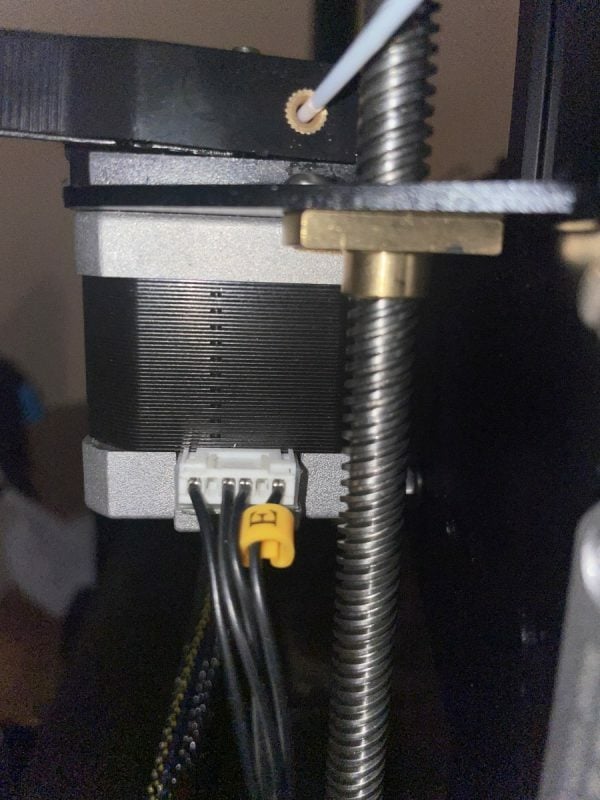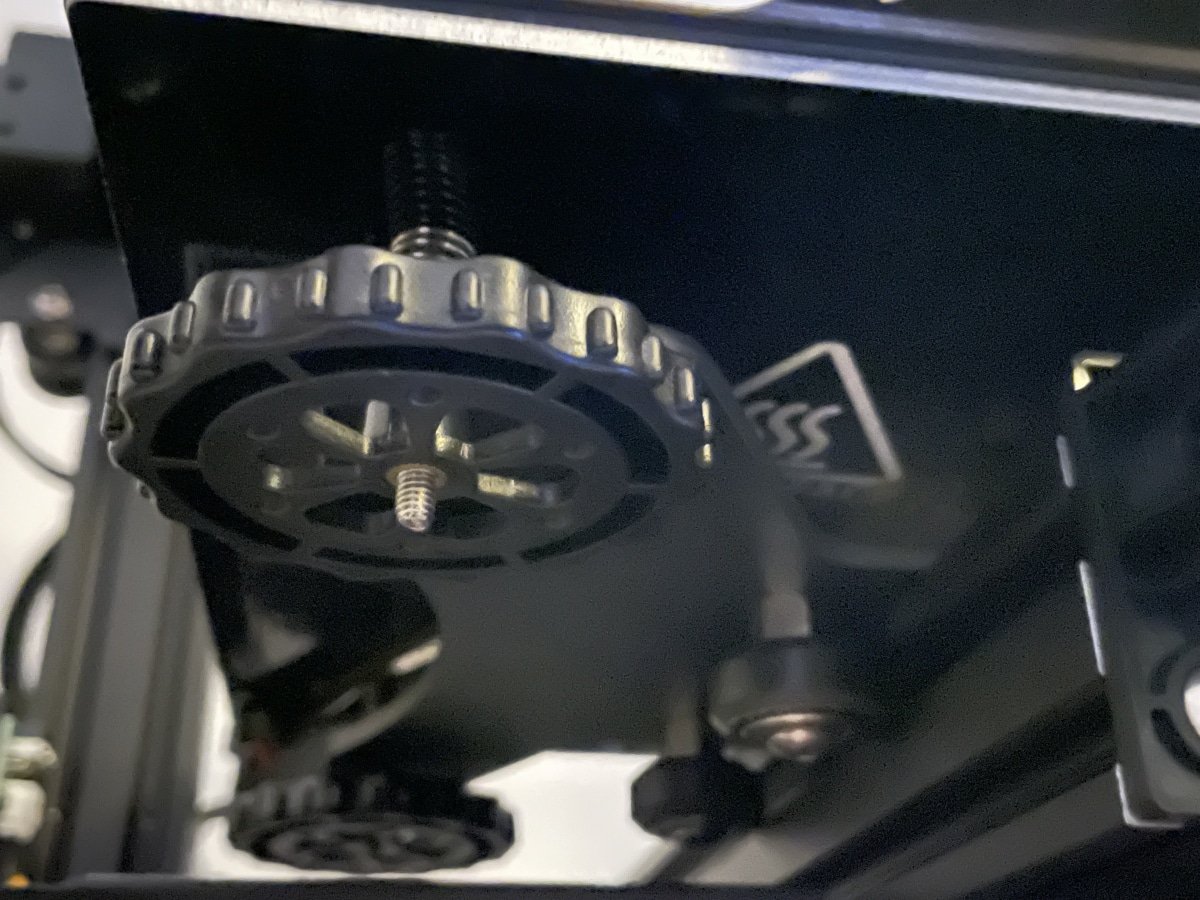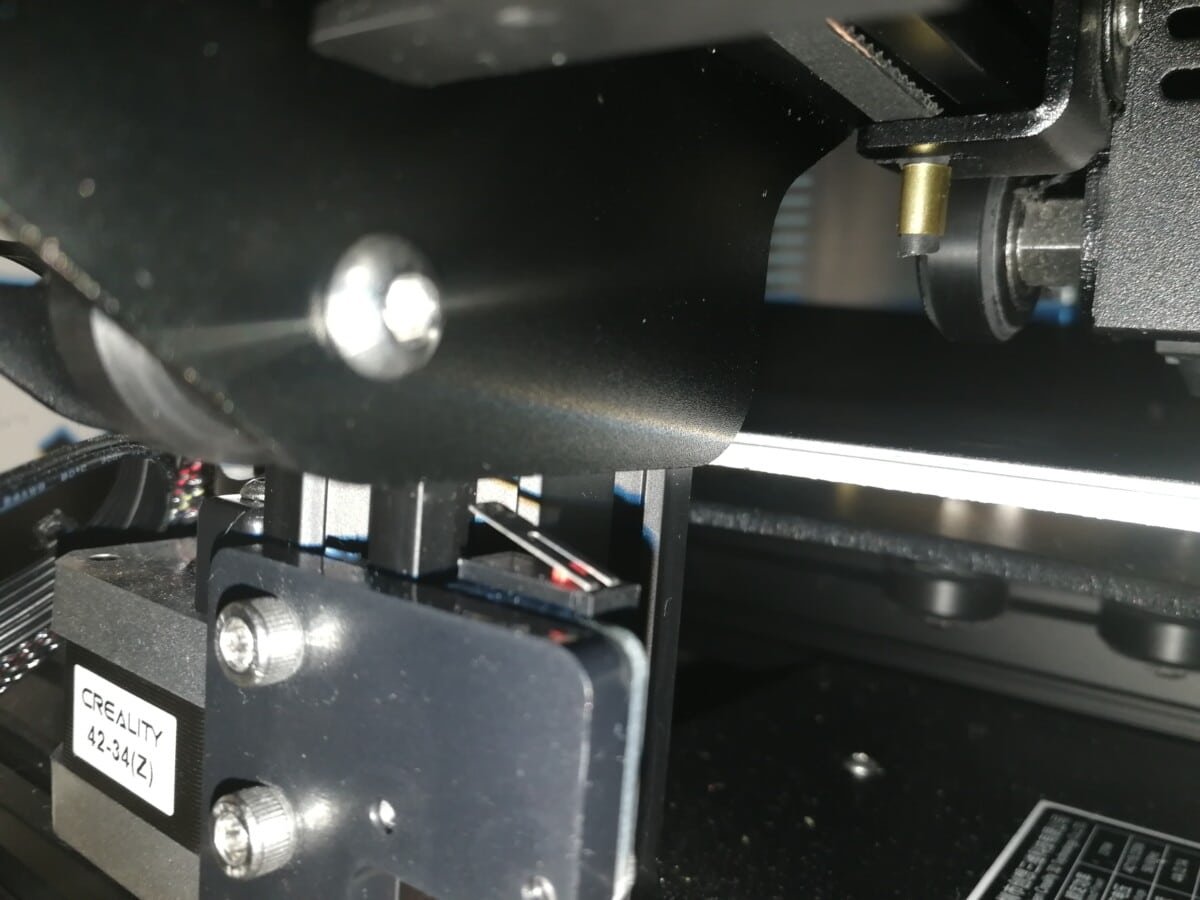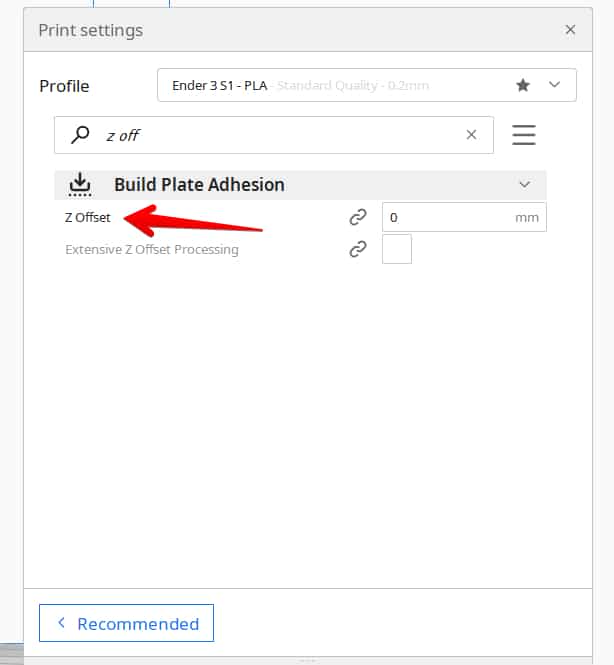How to Fix Ender 3 Z-Axis Issues – Too Short, Binding & More
The Ender 3 is a popular 3D printer on the market. However, it can go through various Z-axis issues such as prints being too short in the Z-axis, Z binding, and motor issues.
This article will go through methods of fixing some of these issues. So, keep reading this article to finally learn how to resolve your 3D printer and Ender 3 Z-axis issues.
You can use the table of contents to skip to an area that’s affecting you or read through the article to see if any issue or fixes apply to you.
How to Fix Ender 3 Z-Axis Too Short & Not Printing to Scale
If your 3D prints from your Ender 3 are not dimensionally accurate in the Z-axis or not to scale, it can be due to several issues. These issues range from mechanical faults in the printer’s setup to problems in the firmware.
Let’s explore how to fix these issues.
Adjust The Eccentric Nuts on The X-Axis Carriage
The eccentric nuts are the parts of the X-axis carriage that secure it to the Z gantry. These eccentric nuts move the X-carriage up and down with the aid of the rollers.
These rollers are what attach the X-axis carriage to the Z-gantry. They are also called POM wheels.
If these rollers are too tight or too loose, the Ender 3 will experience problems printing in the Z-axis. If the rollers are too tight, there will be considerable friction on the Z-gantry as the X-axis carriage moves.
This will slow it down considerably. Conversely, if the eccentric nuts on the rollers are loose, the X-axis carriage will not be properly secured to the Z-axis resulting in it slipping and falling.
You’ll need a wrench to tighten and loosen the eccentric nuts to adjust them.
- First off, inspect the POM wheels (rollers) for pitting or any form of wear. If you spot any wear, replace the wheel.
- Next, check and see if the POM wheels are gripping the Z gantry properly, there shouldn’t be any wobble.
Lastly, tighten the wheels to an optimal level.
- Locate the POM wheel with the eccentric nut (It is usually the single one opposite the pair.)
- As you tighten the eccentric nut, continually roll the wheels with your finger.
- If the wheel still rolls freely, continue tightening it. Once the wheel stops rolling freely and begins to grip and move on the gantry, it has reached the optimal tightness.
Loosen The Screws on The Lead Screw Bracket
The lead screw on an Ender 3 is connected to a bracket on the X-axis carriage via two screws. If these screws are too tight, the carriage will have problems moving in the Z axis due to binding.
So, loosen the screws on the holder a bit to allow the lead screw to move freely. Just be careful not to loosen it too much so as not to introduce play into the system.
Tighten The Z-Motor Coupler
The Z-motor coupler is the component responsible for connecting the lead screw with the Z-motor. If the connection between these components is not solid, the motor may not drive the lead screw properly.
So, reseat the leadscrew into the coupler and tighten it with an Allen key until there is no play at all.
Use A Spacer for The Z Motor
Sometimes, the spacing of the Ender 3’s Z motor from the gantry is inaccurate. This leads to binding and other issues that result in compressed and skipped layers.
You can print Z motor spacers and supports and install them on the Z-motor to fix this. This ensures that the lead screw stays straight when printing.
Check And Oil the Leadscrew
A defective or improperly aligned lead screw can lead to shortened layers. Check your lead screw to see if it’s appropriately bolted to the coupler.
Additionally, check its length for any signs of bending. Also, check if the lead screw nut is correctly aligned with both the motor and the lead screw to avoid the latter bending.
Finally, oil your leadscrew with just a bit of PTFE oil to avoid undue friction when moving.

Calibrate The Steps Per/MM for the X, Y, And Z-Axis
The steps per mm is the value that determines how many times the stepper motor turns to move through 1mm. This value is significant and depends on both the Z motor and the leadscrew’s pitch.
If the value is too high or too low, you will experience variations in print size. I’ll go through how you can check and calibrate your Z-steps/mm in a later section.
Note: Make sure you try all other solutions before attempting to change the value in the firmware.
How to Fix Ender 3/Pro Z Cable Too Short
Some users have had trouble with short and tangled cables on different Ender 3 models. These issues are critical as poor cable management can restrict the motion of the print head, leading to print errors.
Let’s look at how we can resolve this issue.
Check The Cable For Any Tangles
3D printers contain many moving parts, and it’s very easy for the numerous cables on the printer to get hooked on one of them. These cables can even get tangled on each other, further restricting their motion.
So, trace the cable back to the control box. Inspect its length to see if it is tangled up or hooked in any place.
Open The Control Box and Check For Zip-Tied Cables
When the Ender 3 printers are being shipped out, the manufacturers often tie their cables together to make them more compact. The cable will be too short if you set up the printer without removing the zip ties.
So, check the length of the cable for any folded parts being held together with ties. Also, open the control box and check for any cables that might’ve been Zip-tied together for easy transport.
If you find any zip ties, cut them and extend the cable.
Use Cable Extenders
If you do not find any tangled or tied-up part of the cable, you’ll need to use cable extenders. These extenders will help extend the reach of the shorter cables.
However, make sure you get the right cables for the right parts. For example:
- For the stepper motors, you’ll need something like the 1.5M 59-Inch Stepper Motor Lead Wire
- For the end stops, you can get the 6-Pack Mechanical Endstop Limit Switch.
Install A Cable Chain For Cable Management
A cable chain is a flexible plastic casing that can help keep your wires organized to keep them from tangling and getting in the printer’s way.
It is simple and easy to install. Additionally, it looks great and gives your printer a clean, clutter-free look.
You can actually 3D print a Cable Chain from Thingiverse on your 3D printer.
How to Fix Ender 3 Z-Steps Per mm & Calibrate the Z-Axis
As I mentioned earlier, the Z-steps per mm is a value that determines how many steps the stepper motor turns through to move 1mm in the Z-direction.
This value is a function of both the stepper motor and the leadscrew, and it’s usually set to a default value of 400 steps/mm in Ender 3 printers. However, this value might need to be changed if you get prints that aren’t dimensionally accurate in the Z-direction.
How to Fix Ender 3 Z-Steps Per Mm
The ideal method to accurately set your Z-steps per mm is to 3D print a 20mm calibration cube and use a pair of digital calipers to measure how close or far off the cube is in dimensions.
If your cube is lower than 20mm in height or the Z-direction, you need to increase your Z-steps, while a higher than 20mm value would mean you need to decrease it.
The calculation looks like this:
(20mm / Measured value) * Current Z-Steps Value = New Z-Steps Value
Example:
With a measured value of 19.2mm and a current Z-steps per mm value of 400m, you would do 20mm/19.2mm * 400 = 416.67.
Save the new value.
- To store the new value using the LCD screen, go to Control > Motion > Z-Steps/mm.
- Input the new Z-Steps/mm value
- To save the new value, go to Control > Store memory. Once you select store memory, the new value will be stored in the firmware.
If you don’t have the option to save the new value in your 3D printer, you can follow the video above and send commands to input the new value and save it.
How To Calibrate The Z-Axis
It’s essential to calibrate the Z-axis often, especially if you’ve just changed a part in your printing setup. The part could be a print bed or a new nozzle; either way, it’s important to recalibrate your Z height and offset.
You can calibrate the Z-axis on the Ender 3 using three methods. Let’s look at them:
Adjust The Bed Leveling Knobs
The bed leveling knobs, found on many 3D printers are mainly used in leveling the print bed. However, you can use them in recalibrating your Z-axis in small increments.
For example, if you have a new build plate with a small thickness (1mm). Instead of moving the limit switch upwards to reflect the change, you can increase the spring tension to move the bed down
You can do this by turning the leveling knob clockwise. Once you do this, the surface of the print bed will be back to the normal home position, and you can level it from there.

Move The Limit Switch
If the calibration distance is too high, then you might have no choice but to move the Z limit switch. I’ll talk more about how you can accomplish this in a later section.

Use an Z-Offset Value
There is a 3D printer settings called the Z-Offset which basically is a height adjustment for your 3D printer. It usually has a range between -5mm and +5mm and can sometimes be directly input from your 3D printer’s control screen.
You can use a positive value to raise the nozzle height or a negative value to lower the nozzle height. It’s possible to input a Z-Offset directly from a slicer like Cura.

How to Fix Ender 3 Z-Height Issues
Z height issues can occur due to problems with the leadscrew, limit switches, motors, and even the print bed leveling.
So, to solve Ender 3 Z height issues, make sure you:
- Check the leadscrew for binding
- Make sure the end stops are correctly positioned.
- Make sure the bed is appropriately leveled, considering the offset caused by the bed’s thickness.
- Check to see if a tangled or caught cable isn’t limiting the printer’s movement in the Z-axis.
How Do You Align the Z-Axis on an Ender 3/Pro?
A well-aligned Z-axis is essential for the smooth movement of the X-axis carriage in the Z-direction. If the components in the Z-axis are not well aligned, there will be issues like binding and layer skipping.
So, the lead screw has to come through straight from the screw nut holder into the Z-motor coupler without bending for the Z-axis components to be aligned.
So, first off, remove your lead screw nut from the coupler, and see if it aligns perfectly with the coupler’s slot. If it doesn’t, you have to align the coupler with the lead screw nut holder.
Here are two ways you can do it.
Print A Shim And Spacer For The Z-Motor
A spacer can help align the motor’s coupler with the screw nut holder. By placing it at the back of the motors, you bring the motor slightly forward, putting it in perfect alignment with the lead screw.
You can download the file here from Thingiverse.
Note: Ensure the spacer sits flush with the printer’s frame to avoid any other error.
Correct The Lead Screw Nut Holder
Sometimes, the problem lies not with the Z motor coupler but with the screw nut holder. On some occasions, it might be so out of alignment that using a shim and a spacer might not work.
In times like this, you have to unscrew the bracket holding the lead screw nut and try and correct it. However, this is only advisable if you have experience using machine tools.
Also, you can try loosening the screws on the screw nut holder. It helps solve alignment issues; however, it can introduce a bit of play into your printer.
How to Fix Ender 3 Z-Axis Motor Not Working
The Z-axis motor is the main driver of the print head carriage’s motion in the Z direction. If it isn’t functioning properly, then the printer will not move.
You have to troubleshoot and find the root cause to solve this issue. Here are some ways to do that.
Remove The SD Card And Format It
Sometimes, the EEPROM.dat on the SD card can become corrupted whiles using the printer. This results in the Z motor not working during printing but working for all other activities.
To solve this:
- Get another SD card and format it to FAT32 before you use it – done by right-clicking the SD card in File Explorer, selecting “Format,” and choosing “Fat32”.
- Slice the model you want to print and load into your new SD card
- Insert the SD card into the printer and simply print
If the Z motor starts working as usual, then the problem was the defective SD card.
Test The Electronics For Faults And Shorts
Bad wiring can also be the source of the Z-motor’s problems. So, you can test the wiring for any issues by:
- Replace the Z motor’s connecting wire to see if the problem is due to a short.
- Next, check the mainboard and see if the wire for the Z motor is plugged in its correct port.
- Check the stepper drivers on the mainboard to ensure they aren’t burnt out.
Check If The Z Motor Is Receiving Enough Voltage
Note: This requires you to interact with highly dangerous electrical components on your printer. If you aren’t comfortable with these components, I suggest leaving this to a professional.
Test The Mainboard For Faults
To test if the issues with the motor are a result of a faulty mainboard, you have to test the mainboard too. Here’s how you can do this.
- Unplug the Z motor from its port and unplug the X or Y-axis motor.
- Plug in the Z-axis motor into the X motor’s port.
- Send a movement command to the X-axis through your PC.
- If the Z-axis moves, then the problem is with the motor. If it doesn’t move, then the problem is with the mainboard.
If the problem is with the board, check your warranty and see if you are eligible for a new one. If not, then you might have to buy a new one.
How to Fix Ender 3 Z-Axis That’s Hard to Move
A hard-to-move Ender 3 Z-axis is almost always the result of binding between the motor and the lead screw. So, for smoother movement, you have to resolve the issue.
Here’s how you can do it.
Clean And Lubricate The Z-Axis
A dirty leadscrew with dirt will make motion difficult in the Z-axis. So, remove your lead screw and clean it with a solvent to remove all the dirt.
Before putting the lead screw back, make sure you put a bit of PTFE oil on it for smoother movement.
Loosen The Eccentric Nuts
If the eccentric nuts on the rollers holding the X carriage to the Z gantry is too tight, it will be hard for the carriage to move in the Z-axis.
So, loosen the eccentric nuts fully and begin tightening it again. When tightening it, spin the rollers with your finger.
If you’re still able to spin the roller with your finger, continue tightening it. The moment you cannot spin the roller without the X carriage moving, you’ve reached the optimal tightness.
Check The Lead Screw For Bending
A bent leadscrew will almost certainly make moving the Z-axis difficult. To check if the lead screw is bent, put it on a flat surface and roll it.
As it rolls, observe it to see if it’s flat on the surface as it rolls. If it isn’t, the lead screw is bent, and you need to replace it. You can also check it by seeing if it fits inside the bracket naturally without having to push it in the slots.
Align The Z-Axis Components Properly To Prevent Binding
Misaligned components on the Z-axis are the number one cause of binding, making it hard to move in the Z-axis.
To achieve this, make sure all the components – the motor coupler, the leadscrew, and the screw nut holder are well aligned.
How to Fix Ender 3/V2 Z-Offset Not Working or Changing
The Z offset is the set distance between the nozzle and the build plate. For an excellent first layer and a successful print, this value has to be constant across the print bed,
However, the Z offset often varies widely across several printing sessions in some situations, leading to a poor first layer. Here are some ways you can fix this.
Save Your Z-Offset Values
If you forget to save your Z-offset values after setting them, they will always revert to the default setting. To avoid this, always make sure you save the values before powering down your 3D printer.
To save the values, you can send the M500 GCode command via Pronterface, Repetier host or any other software.
You can also save it using the Ender 3’s LCD screen by tapping: Control > Store memory.
Check The Print Bed For Play
The print bed can make the set Z-offset ineffective or inconsistent if it’s not adequately stabilized. To avoid this, check if there is any play on the bed.
Push the bed down on the left and the right sides to see if it moves. If the bed moves, the eccentric nuts under it aren’t stable.
Tighten them further so they aren’t so loose. This should stabilize the bed and stop wobbly movement from the bed.
Make Sure The Limit Switches Are Stable
If the Z-limit switch moves around in its holder, you’re bound to have inconsistent Z-offsets. Using a hex key, make sure the screws on the limit switch’s bracket are properly tightened.
Inspect The Print Head & Nozzle For Play
If the nozzle and the hotend aren’t properly secured on the X gantry, they’ll move around during printing and mess up the Z offset.
To stabilize the nozzle, tighten the rollers holding the hotend to the X-gantry, so they grip it properly.
Tighten Your Z-Axis Components
Components like the lead screw and the eccentric nut are critical to the precision of the 3D printer. The X-gantry will sag if they aren’t properly tightened, leading to inconsistent Z-offsets.
So, check your leadscrew and see if it is loose inside the motor coupler. If it’s loose, remove it and reseat it properly.
Next, make sure the rollers holding the X-axis carriage to the gantries are well tightened.
How to Fix Ender 3/V2 Z-Limit Switch (Too High)
The limit switch is an important component of the 3D printer that tells it where the Z-axis starts from. If placed too high, the printer will stop way short of the bed.
Conversely, if it’s placed too low, the print head will dig into the print bed without stopping. So, the position of the Z-Limit switch is very important.
Here’s how you can fix it:
- First, locate the Z limit switch on the Z gantry.
- Using a hex screw, loosen the bracket holding the limit switch until you can slide it freely along the Z gantry.
- Lower the X-axis carriage down until the nozzle touches the print bed.
- Gently slide the Z-limit up till it “clicks” against the X-axis carriage.
- Mark the position where this happens.
- Tighten the Z-limit’s brackets at this location.
Best Ender 3 Z-Axis Upgrade
The best part about the Ender 3 3D printers is their ability to be customized. You can easily add and remove parts to add new features or to upgrade the printer’s performance.
You can also upgrade your printer’s Z-axis with special aftermarket accessories to improve its performance. Here are two of my personal favorites.
BL Touch Auto-Leveling
Manually leveling the print bed every time you have to print a model can be very cumbersome. By installing an automatic bed leveling system, you automate the entire process making it faster and easier.
The BL Touch auto-leveling system is one of the best on the market for this. It is compatible with various types of print bed materials like glass, plastic, PEI, etc.
You can get the BL Touch Auto-Levelling System from Amazon.
Dual Z-Axis Leadscrew
Stock Ender 3 printers come with only one Z-axis lead screw from the manufacturer. The main disadvantage of this is that it divides the printer into the driver and the driven side.
As a result, one side (the driven) lags behind the other side while the printer works. This can result in a decrease in X-gantry’s and print quality.
So, to avoid this and stabilize the printer, you can spring for the Ender 3 dual Z-axis upgrade. This upgrade introduces a leadscrew to the driven side, ensuring both sides of the Z-axis are level and stable.
You can get the Ender 3 Dual Z-Axis Upgrade Kit from Amazon. Installing it takes quite a bit of work, but you can follow the video below to get it done easily.
Tough Compression Springs or Silicone Leveling Columns
As mentioned above, leveling can get annoying after some time, but the main reason people have to do it so often is because the springs aren’t tough and are getting loose over time.
I’d recommend installing some Tough Bed Compression Springs or BCZAMD Silicone Leveling Columns underneath your print bed so it stays in place a lot better and for longer.
I think all 3D printers should have them installed because it makes the 3D printing process easier over the long run.
So, we’ve reached the end of the article. I hope I’ve been able to help you in solving your Ender 3 Z-axis issues with these tips.
Good luck and happy printing!
